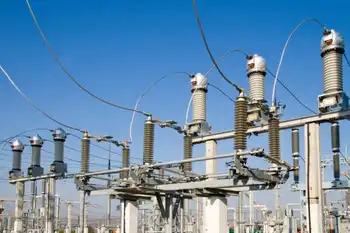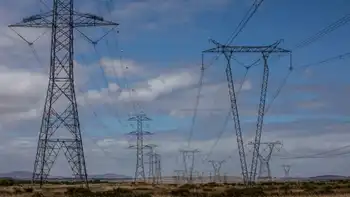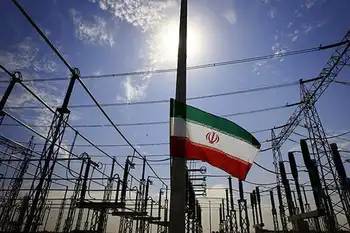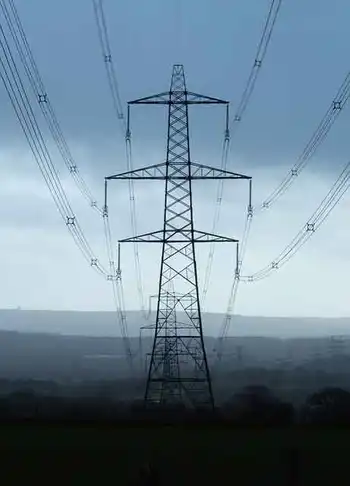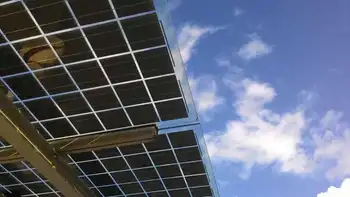Abengoa Solar to build the worldÂ’s largest plant
By Business Wire
Substation Relay Protection Training
Our customized live online or in‑person group training can be delivered to your staff at your location.

- Live Online
- 12 hours Instructor-led
- Group Training Available
The plant, scheduled to go into operation by 2011, is located 70 miles southwest of Phoenix, near Gila Bend, Arizona. It will sell the electricity produced to APS over the next 30 years for a total revenue of around $4 billion, bringing over $1 billion in economic benefits to the state of Arizona.
Arizona Governor Janet Napolitano praised the joint efforts of Abengoa Solar and APS. “This is a major milestone for Arizona in our efforts to increase the amount of renewable energy available in the United States,” the Governor said. “Arizona is leading the way in protecting our world for future generations through increasing the amount of renewable energy, combating climate change, fighting for air quality and much more. This plant will offer Arizonans a clean and efficient source of energy.”
"APS has signed this agreement with Abengoa Solar because of its experience developing and building large solar plants in Spain, Morocco and Algeria,” said APS President Don Brandt.
Santiago Seage, CEO of Abengoa Solar, said, "This project not only shows leadership in Arizona and the southwest, but for America. This project will help usher in a new era of large clean and efficient solar power plants. Our commitment to solar energy is global and we will work with utilities, regulators and companies worldwide to make plants like this happen by leveraging the technologies we have been developing over two decades. We continue to advance these technologies in our research and development centers in Europe and the United States.”
The solar plant has been named Solana, meaning “a sunny place” in Spanish. The Solana Generating Station will have a total capacity of 280 megawatts, enough to power 70,000 homes while avoiding over 400,000 tons of greenhouse gases that would otherwise contribute to global warming and climate change.
The plant will employ a proprietary Concentrating Solar Power (CSP) trough technology developed by Abengoa Solar, and will cover a surface of around 1,900 acres. The construction of the Solana Generating Station will create about 1,500 construction jobs and employ 85 skilled full-time workers once completed.
The solar trough technology uses trackers with high precision parabolic mirrors that follow the sunÂ’s path and concentrate its energy, heating a fluid to over 700 degrees Fahrenheit and using that heat to turn steam turbines. The solar plant will also include a thermal energy storage system that allows for electricity to be produced as required, even after the sun has set. For a complete briefing on Abengoa SolarÂ’s solar trough technology, please visit their website at www.abengoasolar.com.
“This project is one of the most significant on the planet and it could not have happened without the vision and leadership of APS and its senior management,” said Kate Maracas, Vice President of Arizona Operations for Abengoa Solar. “Seldom have we worked with a partner so committed to the future of solar energy and to bringing clean sources of power generation to its customers. We applaud APS for leading the way in bringing long term benefits to Arizona’s environment and economy.”
With this project, Abengoa Solar reinforces its presence in the United States, where it has been building and operating solar plants that supply industrial steam and heat. Abengoa Solar's objective is to build and operate large solar plants that will supply gigawatts of electric power across the Southwest in collaboration with the leading utility companies.
Abengoa Solar is currently operating the world’s first commercial CSP solar tower plant in Spain, a demonstration trough plant and the world´s first commercial photovoltaic low concentration plant. It is also building three more CSP plants in Spain with a total capacity of 120-megawatts, two trough plants that will generate 50-megawatts of electricity each, one tower plant with a capacity of 20-megawats and two hybrid gas-solar plants in Algeria and Morocco.
A subsidiary of Abengoa, a $4 billion multinational company, Abengoa Solar has access to the financial, technical and human resources required to finance, build and operate these large plants.
Abengoa Solar has a team of 40 people in the United States and Spain dedicated to researching, developing and improving solar technologies. In December 2007, the U.S. Department of Energy selected Abengoa Solar for three research and developments projects to improve trough technology.
The construction of this solar plant and others under contract in the U.S. are subject to a long-term extension of the solar investment tax credit by the U.S. Congress.





